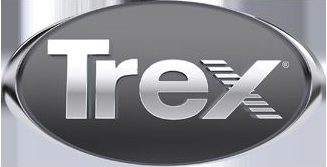
Composite decking is a low-maintenance, high performance product, made from recycled materials that offers a no-fuss luxury deck.

Decking options are plentiful these days, so it’s important to do your research before deciding on your decking material. Take a look at your life-style and think about what the primary use of the deck will be. Composite decking has many advantages when compared to traditional wood decks.


Decks became a luxury staple in homes over 50 years ago. They were typically constructed from pressure-treated lumber, cedar or redwood. Back then, theses decking materials came from 1st generation trees which produced denser lumber that was more resistant to rot and insects.
Eventually, 1st generation trees became scarce and modern trees were engineered to grow quickly in tree farms. However, engineered trees did not have the same density or resistant properties as 1st generation trees. Therefore, the lumber from 50 years ago lasted a lot longer than lumber from modern trees.
Almost 30 years ago man-made composite decking materials were invented due to the limited amount of durable natural wood choices.
In the early 1990’s, the first generation of composite decking materials were made from thermoplastics and recycled wood flour. The issues with these new decking products included sagging, crumbling, cracking, splitting and expansion/contraction of the deck boards.
The next generation of man-made decking materials were created about 10 years later without wood composites and consisted of plastic only. The first plastic deck boards were notorious for becoming brittle and sagging after being exposed to the elements. There were many positives to plastic decking and some of those sought after properties were that plastic decks were guaranteed not to fade, had minimal expansion/contraction rates, were hard to scratch and didn’t crack, and were resistant to mold and mildew.
In 2010, modern composites were again improved upon, this time being called capstock. Modern composite boards are a combination of environmentally friendly wood-plastic composite wrapped in a durable plastic product. Modern composites combine the durability and aesthetics of previous models, without the issues associated with those first products.
Composite decking is an excellent choice for all types of landscape projects and can be found in a wide range of colours, grain styles and price ranges!
Although wood and plastic composites were not perfect in the beginning, they’ve come a long way since their inception.
